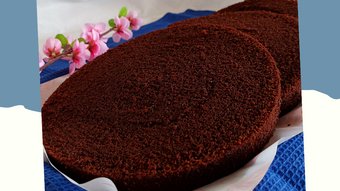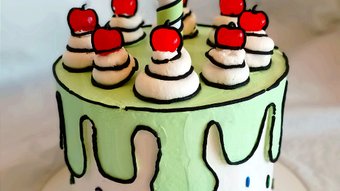KOMBUCHA Y KOMBUCHA SABORIZADA/KOMBUCHA AND FLAVORED KOMBUCHA
15
About :
I recently started drinking this ancestral drink, called Kombucha. The first time I heard about it was here in Chile and out of curiosity I bought a small bottle at the supermarket to try it. I liked its slightly acidic flavor combined with slightly sweet tones. Although this drink is an acquired taste, since not everyone likes sweet and sour. After that little experience I forgot about Kombucha. For me it was just another drink, at that time.
However, thanks to a post, Fruit Drink with Kefir, by our dear Hiver @aguamiel, I became interested in learning more about fermented foods. But, what most attracted me to this publication was the word S.C.O.B.Y* (Symbiotic Culture of Bacteria and Yeast) which in Spanish this acronym means: Symbiotic Colony of Bacteria and Yeast. This biofilm, with a gelatinous texture called SCOBY, is included in fermented beverage preparations such as kefir and Kombucha which is the protagonist of this publication.
Among the different research I did on social networks to prepare fermented beverages, the one that most aroused my interest was the Kombucha which is attributed with countless properties that I will mention later.
But what is Kombucha?
Kombucha is a probiotic drink, prepared from green or black tea, water, organic sugar and a SCOBY. This cellulose, formed by good bacteria, is responsible for doing the work of fermentation, causing some yeasts to transform the sugar into alcohol and then convert it into acetic acid. Therefore, the residual alcohol contained in Kombucha is about 0.5%.
Brief History
According to this drink originated by chance, as a Tibetan monk prepared a tea, which he left forgotten when he went into deep meditation. The wind blew the wild yeast from the mountains into the bowl where the tea had been left uncovered. Upon awakening, the monk realized that his drink had been transformed, since what was once an infusion of tea was now a fermented concoction with a touch of sweetness and acidity, and the fine bubbles gave him a pleasant sensation when he drank it. Marveling, he offered it to his fellow monks who appreciated this peculiar offering and from that day on, they all enjoyed good health and long lives, and thus was born the fermented tea that we know today as Kombucha.
On the other hand, its place of origin is not very clear, but it is said that Kombucha was discovered in China, specifically in the region of Manchuria that borders Russia, more than 2 thousand years ago in the Tsin dynasty. Then, it was taken to Japan by a Korean doctor named Kombu who gave this elixir to drink to the emperor who was sick to his stomach. When the emperor was healed, Kombucha began to spread as a healing drink.
This fermented tea traveled from Asia to Russia and then throughout Europe where it was a popular drink during World War II.
Some properties of Kombucha:
- Excellent source of probiotics.
- Anti-inflammatory potential.
- Lower cholesterol levels.
- Lower blood pressure.
- Improve liver work.
- Improve intestinal function.
- Stimulate the functioning of the immune system.
In this sense, I wanted to experiment with making my own Kombucha at home and see if it really made a positive change in my immune system. Failing that, I could drink it as a natural and healthy refreshment.
To make this drink I needed the most important ingredient, SCOBY and obviously I didn't have it. So, I kept finding out if there was a way to make it at home. In this search, I got a wonderful video showing me how to make a SCOBY from scratch. So I got down to work and made my first SCOBY which took two weeks to form. The truth is that I was very happy with the result and from that SCOBY, on February 26th I made my first Kombucha.
The preparation that I show you in the Short is for 1.6 liters, but I will also leave you the quantities for 1 liter which was the first one I made.
You will need the following ingredients:
•1.6 liters of bottled non-chlorinated water.
•120 gm of organic sugar or brown sugar. I used grated papelón (Do not use refined sugar).
•10 gms of green tea or black tea. The black tea must be only Camellia Sinensis.
•400 ml of natural Kombucha.
•1 SCOBY.
Quantities for 1 liter of Kombucha:
•1 liter of water.
•2 black tea bags.
•80 gms of organic sugar (do not use refined sugar).
•One SCOBY
If you don't have a SCOBY, then you can buy a Kombucha in the supermarket and use it to replace the SCOBY. In case they don't sell Kombucha where you live, I can teach you how to make it from scratch by telling me in the comments and I will gladly make a step-by-step post.
Recommendations:
- Clean the place where you are going to work with vinegar.
- Keep your hands clean.
- Use glass bottles, preferably airtight or glass jars for the 1st and 2nd fermentation.
- Wash very well all the utensils that you are going to use, especially the container where you are going to do the fermentation.
- Store your Kombucha in a dark place where it will not be exposed to direct sunlight.
- Stick a label with the date of preparation on the jar.
- Allow to ferment for approximately 8 to 10 days.
It should be noted that in the process of elaboration of Kombucha there are two fermentations, the 1st fermentation is when the Kombucha is being formed, which takes between 8 and 10 days. The 2nd fermentation is when you add fruits to this Kombucha to flavor it and it is left to ferment for 1 or 2 more days. Although this will depend if you want it with a lot or little effervescence.
Kombucha is not a miracle drink and its supposed benefits are not entirely proven, scientifically. Therefore, if you suffer from any health condition consult your doctor before you start taking it.
Finally, I hope you enjoy this video and if you are an expert fermenter, I invite you to complement this publication with your valuable commentary.
Thank you for joining me in this process and for all your support!
Your friend, Zuuu!
You can also find me on instagram as: @zu_pasteleria, @tayiitos and on RedBubble in my clothes and products store.
All photos and videos in this post were taken with my Xiaomi Redmi 10 cell phone.
Resources: Capcut, Pixabay videos and Deepl Translator.
ESPAÑOL
Hace poco tiempo que empecé a tomar esta ancestral bebida, llamada Kombucha. La primera vez que oí de ella fue aquí en Chile y por curiosidad compré una botellita en el supermercado para probarla. Me agradó su sabor un poco ácido combinado con tonos, ligeramente dulces. Aunque esta bebida es de un gusto adquirido, ya que no a todo el mundo le gusta el sabor agridulce. Después de esa pequeña experiencia me olvidé de la Kombucha. Para mí era una bebida más, en ese momento.
Sin embargo, gracias a una publicación, Bebida de Frutas con kéfir, de nuestra querida Hiver @aguamiel, me despertó el interés por conocer más sobre los alimentos fermentados. Pero, lo que más me atrajo de esta publicación fue la palabra S.C.O.B.Y* (Symbiotic Culture of Bacteria and Yeast) que en español este acrónimo significa: Colonia Simbiótica de Bacterias y Levaduras. Esta biopelícula, con textura gelatinosa llamada SCOBY, se incluye en preparaciones de bebidas fermentadas como por ejemplo, el kéfir y la Kombucha que es la protagonista de esta publicación.
Entre las diferentes investigaciones que hice en las redes sociales para preparar bebidas fermentadas, la que más despertó mi interés fue la Kombucha la cual se le atribuyen infinidad de propiedades que les mencionaré más adelante.
¿Pero qué es la Kombucha?
La Kombucha es una bebida probiótica, preparada a base de té verde o negro, agua, azúcar orgánica y un SCOBY. Esta celulosa formada por bacterias buenas, es quien se encarga de hacer el trabajo de fermentación, haciendo que algunas levaduras transformen el azúcar en alcohol para luego convertirlo en ácido acético. Por lo tanto, el residual de alcohol que contiene la Kombucha es de alrededor de 0,5%.
Breve Historia
Según esta bebida se originó por casualidad, pues un monje tibetano preparó un té, el cual dejó olvidado al entrar en una profunda meditación. El viento arrastró las levaduras salvajes provenientes de las montañas hasta el cuenco donde estaba el té que había quedado destapado. Al despertar, el monje se dio cuenta que en su bebida se había transformado, ya que lo que antes era una infusión de té, ahora era un brebaje fermentado con un toque entre dulce y ácido, además las finas burbujas le producían una agradable sensación al tomarla.
Maravillado, se lo ofreció a sus compañeros monjes que apreciaron esta peculiar ofrenda y a partir de ese día, todos disfrutaron de buena salud y largas vidas, naciendo así el Té fermentado que actualmente conocemos como Kombucha.
Por otro lado, su lugar de origen no está muy claro, pero se dice que la Kombucha se descubrió en China, específicamente en la región de Manchuria que limita con Rusia, hace más de 2 mil años en la dinastía Tsin. Luego, fue llevado a Japón por un doctor Coreano llamado Kombu dándole de beber este elixir al emperador que se encontraba enfermo del estómago. Cuando el emperador fue sanado, la Kombucha empezó a difundirse como una bebida sanadora.
Este té fermentado viajó desde Asia hasta Rusia y posteriormente a toda Europa donde fue una bebida muy popular en la Segunda Guerra Mundial.
Algunas propiedades de la Kombucha:
•Excelente fuente de probióticos.
•Potencial antiinflamatorio.
•Reducir el nivel de colesterol.
•Reducir la presión arterial.
Mejorar el trabajo del hígado.
•Mejorar la función intestinal.
•Estimular el funcionamiento del sistema inmune.
En este sentido, quise experimentar haciendo mi propia Kombucha en casa y saber si realmente hacía un cambio positivo en mi sistema inmune. En su defecto, la podía tomar como un refresco natural y saludable.
Para hacer esta bebida necesitaba el ingrediente más importante, el SCOBY y obviamente no lo tenía. Por lo tanto, seguí averiguando si había una forma de hacerlo en casa. En esta búsqueda, conseguí un maravilloso video donde me mostraba cómo hacer un SCOBY desde cero. Así que me puse manos a la obra e hice mi primer SCOBY que tardó dos semana en formarse. La verdad que estaba muy feliz con el resultado y a partir de ese SCOBY, el 26 de febrero hice mi primera Kombucha.
La preparación que les muestro en el Short es de 1,6 litros, pero también les dejaré las cantidades para 1 litro que fue la primera que hice.
Vas a necesitar los siguientes ingredientes:
•1,6 litros de agua sin cloro de la que viene embotellada.
•120 gm de azúcar orgánica o azúcar morena. Yo usé papelón rallado (No usar azúcar refinada).
•10 gms de té verde o té negro. El té negro debe ser solamente Camellia Sinensis.
•400 ml de Kombucha natural.
•1 SCOBY.
Cantidades para 1 litro de Kombucha:
•1 litro de agua.
•2 bolsitas de té negro.
•80 gms de azúcar orgánica (no usar azúcar refinada).
•1 SCOBY
Si no tienes un SCOBY, entonces puedes comprar una Kombucha en el supermercado y usarla para reemplazar el SCOBY. En caso de que no vendan Kombucha donde vives, te puedo enseñar cómo hacerla desde cero, diciéndomelo en los comentarios y con gusto haré una publicación con el paso a paso.
Recomendaciones:
- Limpiar con vinagre el lugar donde vas a trabajar.
- Tener las manos bien limpias.
- Usar botellas de vidrio, preferiblemente hermética o jarras de vidrios para la 1ra y 2da fermentación.
- Lavar muy bien todos los utensilios que vayas a usar, especialmente el recipiente donde harás la fermentación.
- Guardar tu Kombucha en un lugar oscuro donde no le pegue la luz de sol directamente.
- Pegar en el frasco, una etiqueta con la fecha de preparación.
- Dejar fermentar entre 8 y 10 días aproximadamente.
Cabe destacar que en el proceso de elaboración de la Kombucha existen dos fermentaciones, la 1ra fermentación es cuando se está formando la Kombucha que se realiza en un tiempo de entre 8 y 10 día. La 2da fermentación es cuando a esta Kombucha le agregas frutas. para saborizarla y se deja fermentar entre 1 o 2 días más. Aunque esto dependerá si lo quieres con mucha o poca efervescencia.
La Kombucha no es una bebida milagrosa y sus supuestos beneficios no están demostrados del todo, científicamente. Por lo tanto, si sufres de alguna condición de salud consulta con tu médico antes de empezar a tomarla.
Finalmente, espero disfrutes de este video y si eres un experto fermentista, te invito a complementar esta publicación con tu valioso cometario.
¡Gracias por acompañarme en este proceso y por todo tu apoyo!
¡Tu amiga, Zuuu!
También me puedes encontrar en instagram como: @zu_pasteleria, @tayiitos y en RedBubble en mi tienda de ropas y productos.
Todas las fotos y videos de esta publicación fueron realizadas con mi celular Xiaomi Redmi 10.
Recursos: Capcut, Pixabay videos y Deepl Translator.
Interferencia televisión
Tags :
Their limit for today is $0!





























Comments:
Reply:
To comment on this video please connect a HIVE account to your profile: Connect HIVE Account